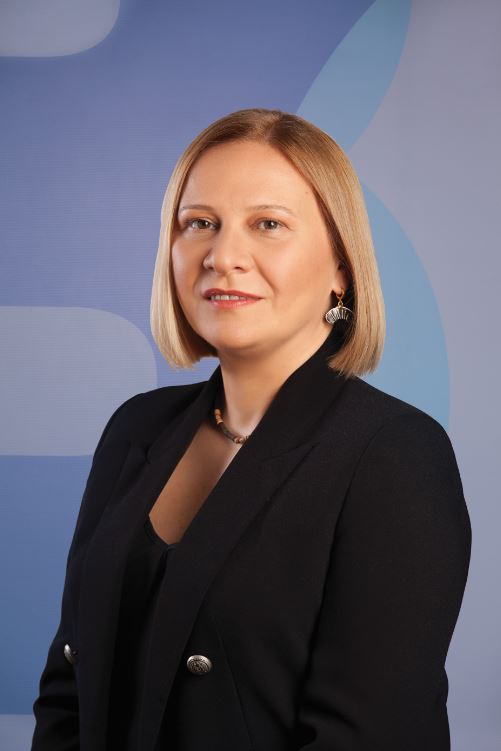New Financial Instruments

Nodar Liluashvili
Student, International School of Economics at Tbilisi State University
Current Landscape of Access to Finance in Georgia
Georgia is an upper middle-income economy with a growing business sector primarily comprised of small and medium enterprises (SMEs). According to the National Statistics Office of Georgia, the year 2022 witnessed SMEs contributing significantly, accounting for 51.4% of output, 50.5% of value added, and 60.1% of the workforce in the business sector. However, the growth potential of the business sector, especially for SMEs, faces a significant hurdle in the form of limited access to finance. This constraint impedes the ability to innovate, by restraining investments in fixed assets and working capital. As reported by the most recent World Bank Enterprise Survey for Georgia, businesses name access to finance, alongside political instability, and inadequate workforce education, as the main obstacle in the business environment.
Delving deeper into the financial landscape, the same World Bank survey highlights the reliance of Georgian businesses on internal sources for funding is higher in comparison with other upper middle-income economies and other countries in Europe and Central Asia. Despite of prevalence of checking or savings accounts among nearly all SMEs, only 51% of small and 53% of medium enterprises have access to financial services in the form of a bank loan.
This discrepancy can be attributed to the high rate of loan rejection. According to the 2018 Bank Lending Survey by the European Investment Bank (EIB), financial institutions name the riskiness of clients as the most common ground for rejecting loans. The banks also indicate insufficient collateral as a constraint to SME lending. Indeed, according to the EIB study, collateral ratios exceed 100% for some types of collateral.
Moreover, female entrepreneurial potential faces several limitations. Only one-fifth of firms have female participation in ownership, and 16% of firms have a female top manager (Enterprise Survey 2019). Access to finance, political instability, and an inadequately educated workforce are identified as the biggest obstacle for doing business by female top managers.
In the Georgian financial landscape dominated by commercial banks, efforts have been made to diversify funding sources. Legal frameworks for new financial instruments – such as covered bonds and securitization – have been introduced to support this diversification.
In a significant move in 2022, Georgia adopted the covered bonds legislation, followed by the securitization law in December 2023. Covered bonds and securitization entail pooling various assets – such as loans – to create tradable securities, that can be sold to investors. This initiative aims to provide banks with more liquidity and capital to facilitate lending to the economy, potentially benefitting small and medium enterprises by gaining access to business loans. Moreover, since the law does not restrict the origination solely to the financial sector, companies could employ their cash flow-generating assets as collateral for securitization instruments.
Despite a decrease in the average loan-to-deposit ratio (LDR) in the Georgian banking sector in response to the inflow of non-residents triggered by the outbreak of the conflict in Ukraine, the cross-sector average LDR remained at 101% as of June 2023. Both covered bonds and securitization can serve as refinancing tools for banks, while securitization can also be used to reduce risk as the originator typically relinquishes the ownership of the securitized assets. For investors, the distinct appeal of the covered bonds can be attributed to dual recourse to both the cover pool and issuer’s equity, and the high quality of the underlying collateral.
To bolster companies seeking financing, one way is to establish a framework enabling businesses to reach a larger pool of potential backers for equity financing. Crowdfunding, the practice of financing a project or a business by raising small sums from a multitude of investors through online platforms, presents a viable avenue. The availability of crowdfunding could empower firms to meet their financing needs without resorting to a bank loan or internal funds.
Another way to improve the availability of non-banking sources of financing is leasing. In this arrangement, a lessee pays the owner (equipment, land, etc.) for the use of an asset, covering all costs and rewards associated with the asset. Some types of leases, such as finance leases, can be viewed as a means to fund the acquisition of an asset. Leasing could benefit SMEs, as it allows the cash outlay needed for investment to be spread across time, easing the financial burden.
Factoring emerges as another financial strategy that could allow SMEs to sell receivables and thus convert future cash flows into liquid assets. Beyond improving liquidity factoring also relieves the companies of the responsibility to control payments of receivables. Generally, factoring companies assume risks of factored assets and help to mitigate risks taken by the seller, which addresses a key concern reported by commercial banks as a primary reason for the denial of loans to businesses.
Prospects and Challenges
It is important to note that the capital market in Georgia remains underdeveloped. Despite this, domestic issuance of corporate bonds has grown over the past few years, escalating from approximately GEL 200 million in 2017 to more than GEL 800 million in 2023.
An important factor for strong securitization and covered bond markets in Georgia lies in the quality of assets to be securitized. Notably, a significant vulnerability to the Georgian assets – specifically, loans made by commercial banks – is the exchange risk stemming from the high dollarization rate which stands at 45.18% despite steadily decreasing over the past years.
A key step for the new financial instruments is credit enhancement. This practice serves to elevate quality and mitigate the credit risk associated with the security. The most common techniques include over-collateralization, in which case, the issuer backs the security with underlying assets the value of which exceeds the value of the loan, subordination that prioritizes higher-rated bonds so that the losses on the underlying assets are first incurred by lower-rated bonds, and the adjustment of excess spread – the difference between interest payments on the underlying assets and interest payable on the securitized instruments.
Furthermore, the recent reforms can enhance the issuance of Green, Social, Sustainable and Other Labeled (GSS+) bonds, which are used to fund environmental, social, and sustainability-linked projects. Noteworthy increases in the placement of such bonds by Georgian companies are evident, rising from $90 million in 2022 to $188 million in 2023. Examples include the issuance of USD 80 million green bonds with a 7% coupon rate by Georgian Renewable Energy Operations JSC in October 2022, USD 15 million worth of sustainability-linked bonds with a 9% coupon rate by Geosteel LLC in April 2023, and GEL 15 million worth of Lari-denominated green bonds by TBC Leasing JSC.
As to crowdfunding, the legal framework for this practice is yet to be introduced. Ideally, forthcoming crowdfunding regulations should take into account the main tenets of crowdfunding, emphasizing the relative simplicity of the process and availability to small companies. Establishing a conducive environment for crowdfunding necessitates provisions that mitigate adverse selection, moral hazard, and information asymmetry, aspects that are characterized by more traditional forms of financing.




 Search
Search





